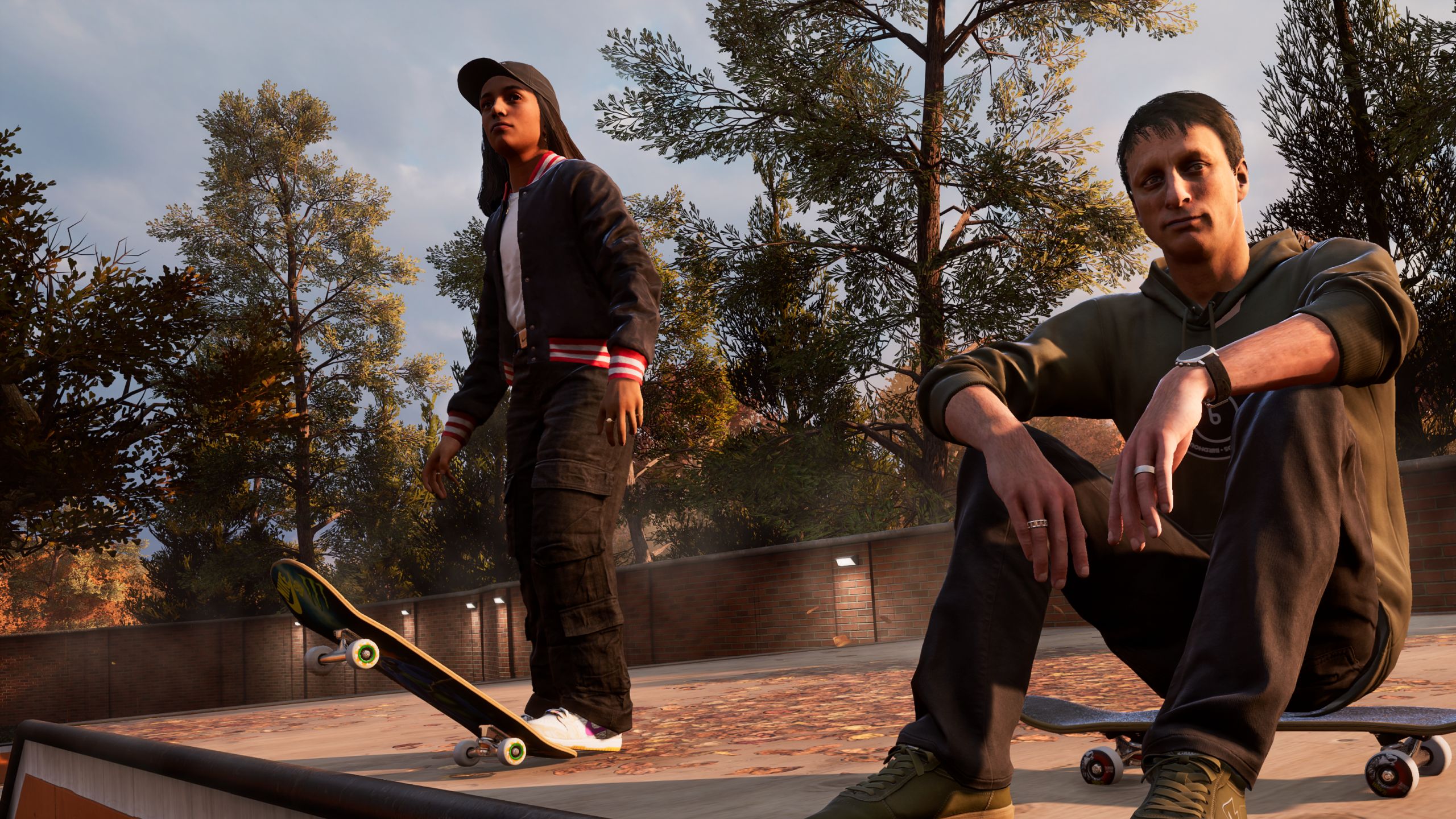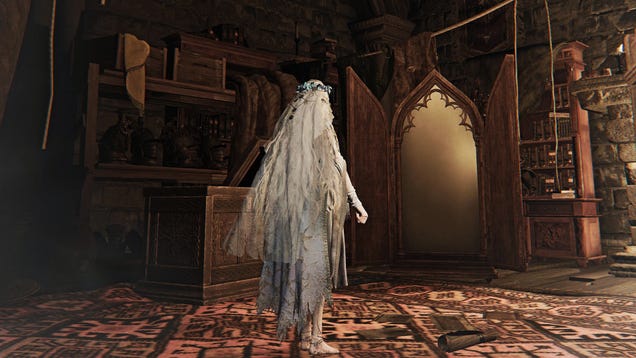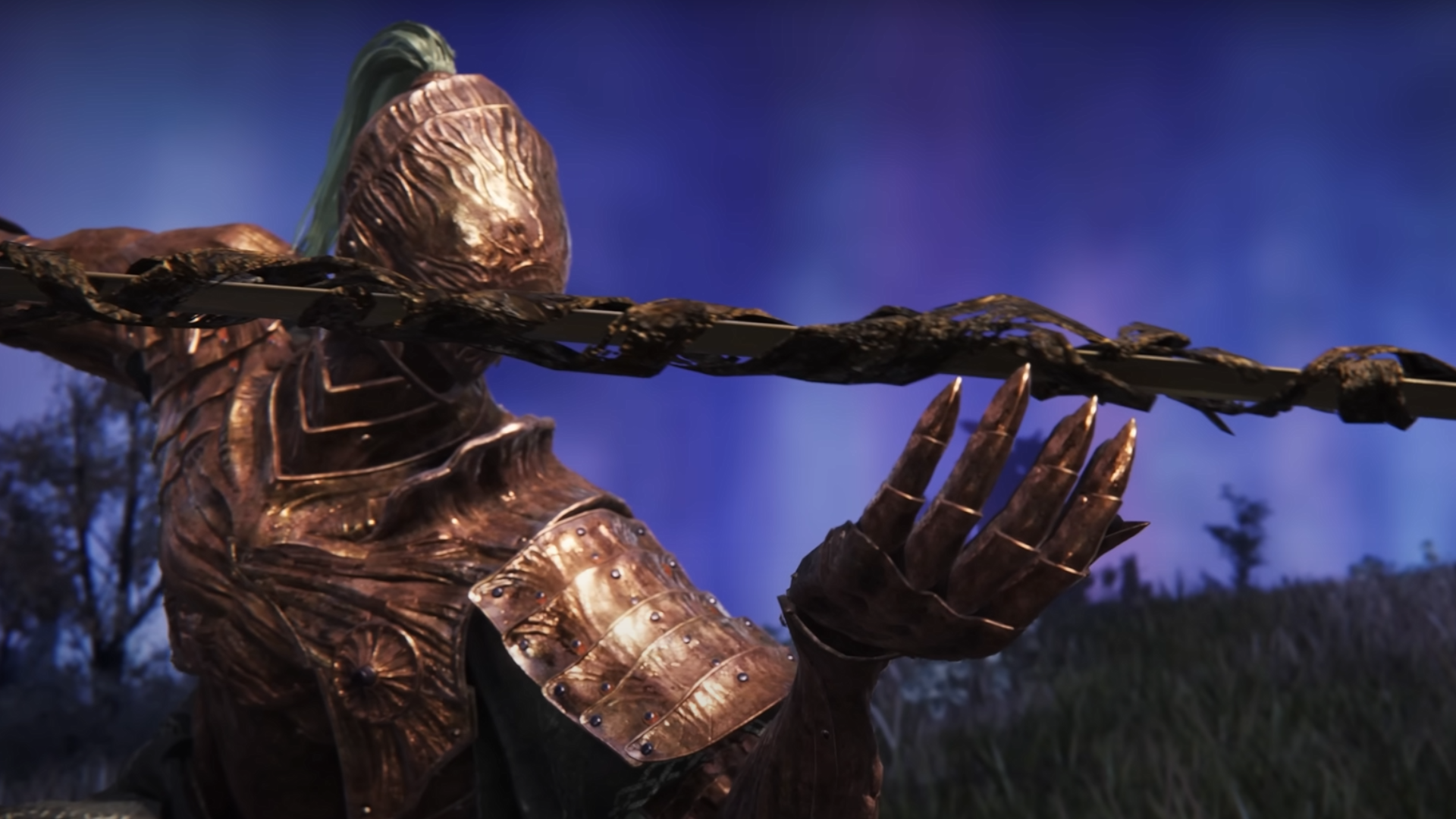
Leslie Benzies, the former president of Rockstar North and producer of eight Grand Theft Auto games, is hard at work on a brand new AAA action game. Along with hundreds of developers at his new studio, Build A Rocket Boy, he’s developing MindsEye; a cinematic conspiracy thriller with glossy photo-realistic visuals, car chases, and shootouts. But MindsEye is not like any AAA video game you’ve ever played for one important reason: it’s exclusively available to play inside another video game, also in development at Build A Rocket Boy. That game is Everywhere, a free-to-play title coming initially to PC later this year, and it’s about as far away from GTA as it could possibly be.
As part of a recent trip to Build A Rocket Boy’s HQ in Edinburgh, Scotland, I was able to watch barely more than a minute or two of MindsEye in action. But I did get to see a reasonable amount more of Everywhere, a platform most simply described as big-budget Roblox. Less simply, Everywhere is many things: a PlayStation Home-like social space, a third-person shooter, a racing game, and – most importantly – a game creation tool. While it will launch with numerous game modes and locations, Everywhere’s flagship feature is its suite of comprehensive tools that allows anyone to make their own game or experience. Imagine Media Molecule’s Dreams with a Fortnite aesthetic and you’re more than halfway there.
But where Dreams presents itself as something of a YouTube for aspiring game developers, Everywhere has more of a Ready Player One vibe. Your customisable avatar is able to explore many worlds, starting with the city of Utropia; a bright metropolis of curved architecture that’s home to a variety of activity zones. Combat and Racing Districts provide quick multiplayer thrills, while The Collection area features a personal catalogue of items to be used in your creative projects. The Entertainment District, meanwhile, acts as a lobby for a variety of different experiences, including an art gallery and cinema. The space also hints at larger ambitions of taking on Fortnite at its own metaverse game. Will it be the stage for the next big virtual Ariana Grande concert or Christopher Nolan trailer premiere? Only time will tell.
Surrounding the city is a more traditional gameplay-focused open world split into four different biomes: the canyon, lava, forest, and grassland regions. My hands-off demo offered very limited glimpses of these areas, but they’re promised to feature PvE and PvP activities based around Everywhere’s combat and driving mechanics. The third-person shooting appears pretty straightforward, with blasts from energy weapons interspaced between triple-jumps and air dashes. The Hot Wheels-ish driving, meanwhile, looks like the kind of arcade racing in which the only important button is the accelerator.
These two gameplay formats appear to act as the foundation of Everywhere; the seeds from which thousands of player creations could grow. And hopefully they will grow, because right now the pre-built stuff all looks a bit bread-and-butter. I’ve admittedly only seen a very slim slice of what’s on offer, but what I did see felt like frameworks rather than compelling games in their own right. And thanks to its family-friendly art style, I can already see the “We have Fortnite at home” memes.
Where Dreams presents itself as something of a YouTube for aspiring game developers, Everywhere has more of a Ready Player One vibe.
But it will be the creations of the community that will likely be the platform’s lifeblood. Everywhere’s Unreal Engine 5-powered tool – called ARC-adia – is used to create ARCs; player spaces that can be as simple as a house-like social space or as complicated as a video game level rigged with interconnected mechanics. Using something of a Lego-like approach you assemble your creation from a variety of pre-made components. Some of those are what could be considered ‘level ready’, like a detailed wall column. Others are merely blank canvas shapes, ready to be affixed to multiple other shapes in order to build up something recognisable. All these elements can then be linked together with logic triggers that activate systems – in the most basic terms, items can be programmed to do X if Y happens. It’s seems like an admirably approachable system, but I’m unsure if it will hold up compared to Fortnite’s existing Creative mode and the impressive Unreal Editor for Fortnite that launched in beta only yesterday.
I was shown a few examples of projects crafted using ARC-adia, including a time trial in which climbing platforms activate when you shoot a target, and a huge robo-scorpion enemy that sweeps players aside and toasts them with its fiery breath. But while I was able to literally see the effort that went into these creations as a developer edited them in real-time in front of me, the results appeared quite simplistic. I hope that in the hands of players Everywhere will come alive, but I’m a little concerned that these were the examples being offered by an expert team already intimately familiar with the tools.
Echoing Dreams, creations can be turned into ‘Stamps’ (which are, thankfully, definitely not NFTs) and shared for others to use in their own projects. Your big boss can be dropped into someone’s battle arena, and your puzzle dungeon linked to another person’s level by way of a portal. Those portals promise to be doorways to collaboration and inspiration. A group of friends could link their levels via portals to create a multi-stage campaign. The fifth stage of that campaign could become a viral hit within the community, and then be modified for use in a hundred other creations. That’s the dream, anyway.
Viral creators may become the main pull in the future (and will be promoted in Utropia’s Entertainment District for all to see), but to begin with the brightest star among the projects built in Everywhere will likely be the game made by Build A Rocket Boy itself. The sinister and futuristic MindsEye may share little in common with the family-friendly sheen of Everywhere, but it is being built with the very same tools that players will use. Furthermore, its assets and mechanics will be made available to players for use in their own creations. Essentially, you’ll be able to break MindsEye down into its component parts and rebuild it in your own vision. And with the game planned to be released episodically with different features in each instalment (episode two is set to be multiplayer-focused, for instance), that means multiple drops of new MindsEye assets are already in the pipeline, alongside any content planned for Everywhere.
I arrived at Build A Rocket Boy with no idea what Everywhere was. After five hours at the studio, I left in a similar situation. The team clearly has an impressive ambition of massive scope, with elements of Roblox, Dreams, and Fortnite clear to see in its many, many components. But the fact that it appears to be something of a chimera made up of, at the very least, three other games has me wondering about Everywhere’s focus and identity. It’s a game creation tool but also a full, ready-made game. Its shooting and driving modes look underwhelming, but there’s also a seemingly impressive action game in there with AAA production values. It’s a social hub and entertainment platform that may or may not be a metaverse. It is everything, everywhere, all at once, and I’m already concerned that its ambition may exceed its grasp. And with the seemingly more flexible Unreal Editor for Fortnite having launched to an entrenched audience of 500 million (who already spend over 40% of their time in player-created spaces), I fear Everywhere may already have lost the race before it’s even approached the starting line.
Matt Purslow is IGN’s UK News and Features Editor.








